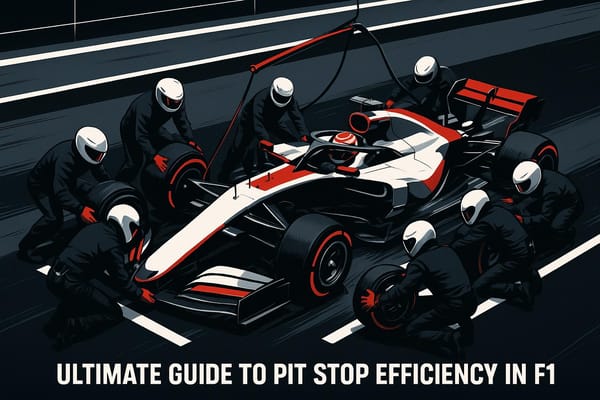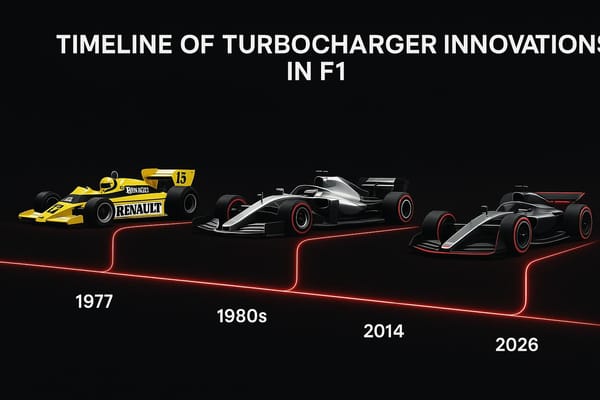Blocking vs. Defending: F1 Traffic Rules Explained
Explore the crucial differences between blocking and defending tactics in Formula 1, including rules, risks, and their impact on race strategy.
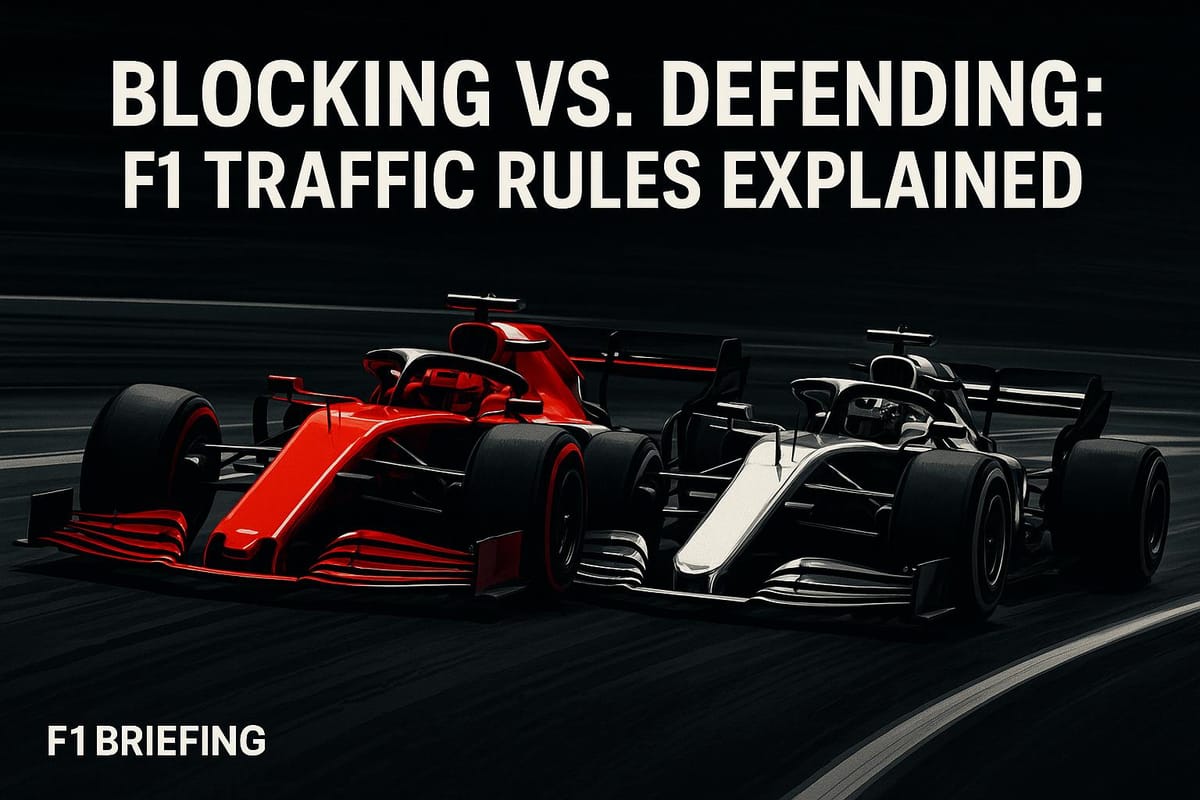
In Formula 1, defending and blocking are two key tactics used to manage on-track battles, but they have very different rules and consequences. Here's the breakdown:
- Defending: A legal, proactive move where a driver protects their position by making one calculated move before an opponent commits to overtaking. It prioritizes safety and race flow.
- Blocking: An illegal, reactive maneuver where a driver obstructs an opponent already committed to overtaking. This often leads to penalties and risks collisions.
The FIA allows one defensive move per straight, and returning to the racing line must leave at least one car width for opponents. Blocking, however, involves sudden or multiple moves, which are penalized heavily to ensure fair racing and safety.
Quick Overview:
- Defending: Legal, deliberate, and strategic.
- Blocking: Risky, reactive, and penalized.
Understanding these rules is crucial for fans and drivers alike, as they shape race outcomes and driver reputations.
Is Blocking Or Weaving Allowed During Motorsport Overtakes? - The Racing Xpert
Defending: Legal Tactics and Race Execution
In Formula One, defending is all about precision and strategy. It's a skill that separates the best from the rest, often making the difference between holding onto a position or losing it in a split second.
What is Defending in F1?
Defending is a deliberate tactic where drivers secure their position by choosing the ideal racing line before an opponent attempts to overtake. Typically, this involves making a single, calculated move - like covering the inside line into a corner - to force the attacking driver into a less favorable position or even abandon the attempt altogether. However, this strategy must align with strict FIA regulations to ensure fair play and safety.
Rules for Legal Defending
The FIA allows drivers to make only one defensive move per straight. Any additional or reactive moves once an opponent is alongside can lead to penalties, ranging from 5-second time penalties to more severe drive-through penalties. Predictability is key; according to the FIA International Sporting Code, "more than one change of direction to defend a position is not permitted". Drivers are also required to avoid forcing opponents off the track or creating situations that could lead to contact, prioritizing safety at all times.
Examples of Successful Defending
Some of the most iconic moments in Formula One history showcase the art of defending. Take Fernando Alonso's masterclass at Imola in 2005, for instance. Lap after lap, Alonso executed perfectly timed single moves that kept Michael Schumacher at bay without sacrificing his own pace.
Lewis Hamilton has also demonstrated exceptional defensive driving, often using the inside line in braking zones to leave his rivals with no choice but to attempt riskier outside passes. His ability to anticipate and neutralize overtaking attempts has been a hallmark of his racing style.
Kimi Räikkönen’s 2018 performance at Spa is another great example. Navigating the Eau Rouge-Raidillon complex, Räikkönen used precise positioning and timing to fend off overtaking attempts, even in the face of modern challenges like DRS zones. His adaptability and control highlighted how defending has evolved with the sport.
What ties these examples together is a common approach: early positioning, a single decisive move, and predictable execution. By forcing attackers onto less advantageous lines or making them reconsider their moves entirely, effective defending not only breaks an opponent’s rhythm but can also create lasting gaps over multiple corners.
Blocking: Risks, Regulations, and Penalties
Blocking in Formula One isn’t just a questionable tactic - it’s a dangerous one. Unlike defending, which is a calculated and proactive strategy, blocking is a reactive move that compromises safety and undermines the fairness of competition.
What Constitutes Blocking in F1?
Blocking happens when a driver reacts to an overtaking attempt already underway. The difference between blocking and defending comes down to timing. Defending involves a single, deliberate move made before the attacking driver commits to a line. Blocking, on the other hand, is a reactive maneuver that disrupts safety on the track.
Common examples of blocking include:
- Sudden direction changes to cut off an approaching car
- Making multiple moves across the track to prevent overtaking
- Swerving when the attacking car is already alongside
For instance, if a driver moves to cover the inside line before their opponent commits, it’s considered a legal defense. But any sudden move made after the attacker is alongside crosses the line into blocking territory.
FIA Rules on Blocking
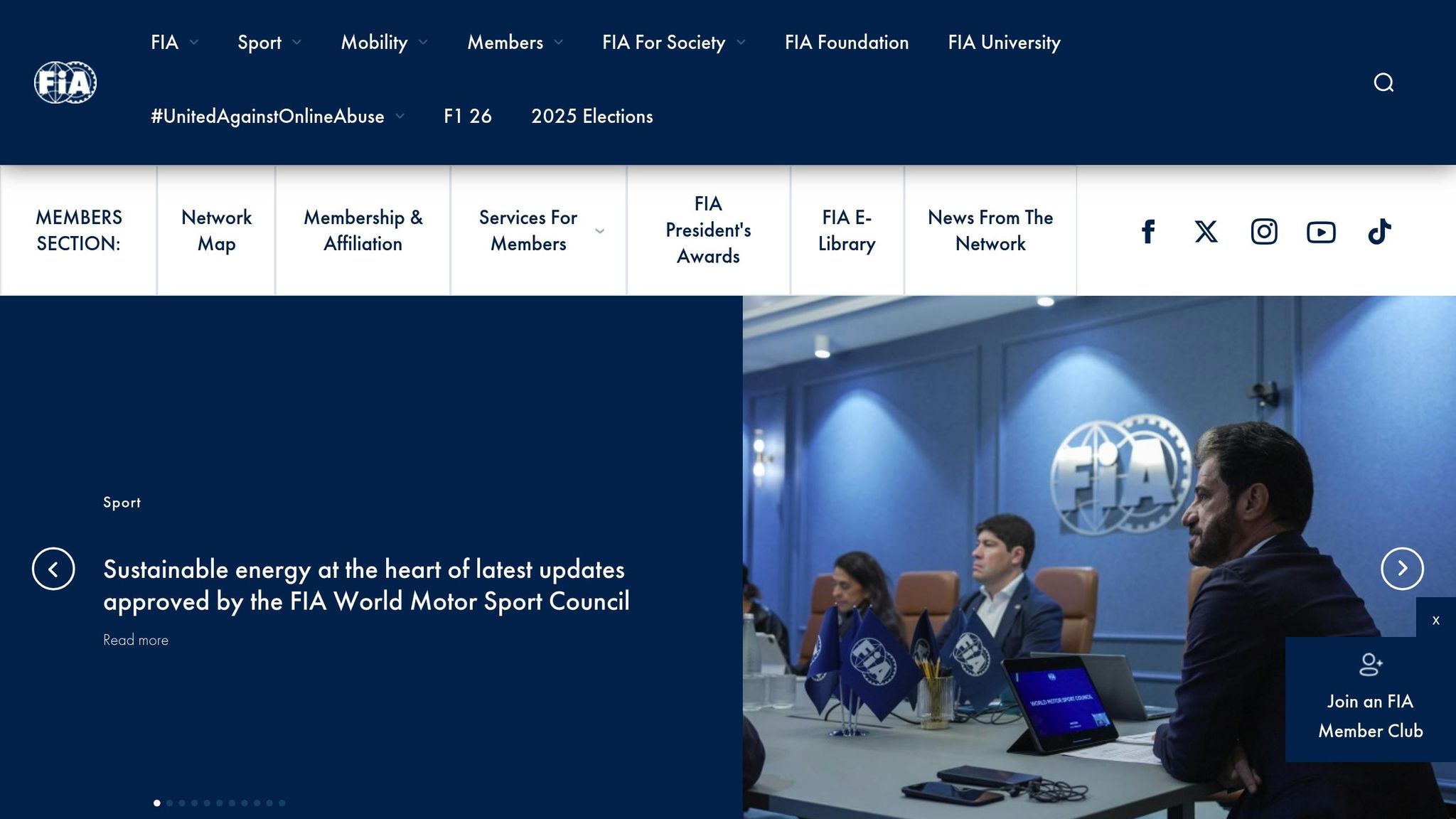
The FIA has strict rules to prevent blocking. Drivers are allowed only one defensive move per straight, and any reaction to an overtaking attempt after it’s initiated is a violation. According to the FIA Sporting Regulations:
"More than one change of direction to defend a position is not permitted. Any driver moving back towards the racing line, having earlier defended his position off-line, should leave at least one car width between his own car and the edge of the track on the approach to the corner."
Race stewards rely on multiple camera angles and telemetry data to determine whether a driver has breached these rules. Violations result in immediate penalties and can escalate into more serious consequences.
Risks and Penalties of Blocking
Blocking comes with significant risks, both on and off the track. The most immediate danger is collisions, which can cause severe damage to cars and increase the risk of injury to drivers. Beyond safety concerns, blocking also leads to strict penalties.
Take these examples:
- At the 2019 Canadian Grand Prix, Sebastian Vettel was handed a 5-second penalty for blocking Lewis Hamilton.
- In the 2012 Italian Grand Prix, Michael Schumacher faced a harsher 10-second stop-and-go penalty for making multiple defensive moves against Lewis Hamilton.
Penalties for blocking typically range from 5 to 10 seconds but can escalate. Severe infractions may result in drive-through penalties, grid drops for future races, or even disqualification in extreme cases. The financial impact can also be significant, as blocking incidents can affect a team’s championship standing, reduce sponsor visibility, and cut into prize money. Additionally, a driver’s reputation can take a hit, potentially influencing future race dynamics and contract opportunities.
To avoid these risks, experts recommend that drivers carefully plan their defensive moves and limit themselves to one proactive move per straight. This approach not only upholds safety but also ensures fair competition on the track.
Blocking vs. Defending: Technical Comparison
While both blocking and defending aim to manage track position, they differ significantly in execution, legality, and outcomes.
Defending is all about being proactive. A driver anticipates an overtaking attempt and positions their car strategically before the opponent commits to a line. This foresight allows the defending driver to maintain an optimal racing line while still protecting their position.
On the other hand, blocking is a reactive maneuver. It happens when a driver swerves to obstruct an opponent who has already committed to an overtaking move. This reactive nature makes blocking inherently riskier, both for the drivers involved and the race itself.
The way these moves are carried out further highlights their differences. Defending is characterized by smooth, deliberate movements that are predictable for other drivers. Blocking, however, often involves abrupt changes in direction or multiple reactive moves, creating a higher risk of collisions and chain-reaction incidents.
From a strategic standpoint, defending is a legitimate tool for controlling a race. A well-executed defensive move can force an attacking driver to attempt an overtake on a less-than-ideal line or wait for a better opportunity, allowing the defending driver to maintain their position with minimal risk. Blocking, while it may temporarily prevent an overtake, often leads to penalties and lost positions, making it a poor long-term strategy.
Here's a quick breakdown of the key differences:
Comparison Table: Blocking vs. Defending
| Aspect | Defending | Blocking |
|---|---|---|
| Legal Status | Legal (limited to one move) | Often illegal or penalized |
| Timing | Before the attacker commits | After the attacker is alongside |
| Move Count | One deliberate move | Multiple or reactive moves |
| Risk Level | Low to moderate | High (collision and penalty risk) |
| Typical Outcomes | Maintains position; fair racing | Penalties; potential crashes |
| Strategic Value | High (forces calculated overtakes) | Low (penalties outweigh benefits) |
| Predictability | Predictable and deliberate | Unpredictable and erratic |
This distinction between the two approaches heavily influences how drivers manage their positioning and timing during a race.
Modern Formula 1 increasingly emphasizes clean defending over risky blocking. With the advent of DRS zones, overtaking on straights has become more achievable, encouraging drivers to focus on early, strategic positioning rather than last-second, desperate maneuvers.
Race stewards rely on telemetry data and multiple camera angles to evaluate these moves. Timing is everything - if a driver makes a defensive move before the attacking car draws alongside, it’s generally considered legal. However, moves initiated after the attacker commits are often flagged as blocking violations.
Ultimately, defending rewards a driver’s skill, anticipation, and strategic thinking, while blocking tends to result in penalties and compromised safety, making it less effective in the long run.
Impact on Race Strategy and Driver Performance
The choice between defending and blocking plays a major role in shaping a team's race strategy and how drivers perform on track. These tactics influence qualifying sessions, race-day decisions, and even championship outcomes.
Role of Defending in Race Positioning
Defending is critical for maintaining track position, allowing drivers to hold their ground through sharp anticipation and precise car handling. When done effectively, defending enables a driver to control the flow of the race, forcing opponents into less favorable positions while managing resources like tires and fuel. This can give the defending driver the ability to extend their stint and gain flexibility with pit stop timing.
A car's performance can greatly enhance defensive tactics. For instance, strong braking systems allow drivers to brake later while still protecting the inside line, making it harder for opponents to overtake. Similarly, excellent traction out of corners helps drivers retain their position even when they take a defensive line through a turn.
When cars are evenly matched, driver skill becomes the deciding factor. Elite defending requires split-second timing and the ability to anticipate an opponent's moves. The best drivers can position their cars to block overtakes while maintaining competitive lap times, setting them apart from the rest of the field.
Teams often build strategies around a driver’s defensive strengths. A driver known for holding off faster cars might be tasked with running longer stints, trusting their ability to protect position even on worn tires. This approach can provide a strategic edge in races where track position is more valuable than outright speed.
Blocking, on the other hand, disrupts this balance entirely.
How Blocking Affects Race Dynamics
While defending supports race strategy, blocking creates chaos and unpredictability, disrupting carefully laid plans and forcing teams to rethink their approach mid-race. Unlike defending, which protects position while keeping the race flowing, blocking introduces risks that can derail not just one driver’s race but potentially impact multiple competitors.
Blocking often results in penalties that force immediate strategy adjustments. Drivers may face time penalties, drive-throughs, or grid drops in future races, all of which can throw off a team's race plan. These penalties might require unscheduled pit stops or push drivers to overextend, leading to higher tire wear and increased fuel consumption.
Blocking also has a broader impact on race dynamics, frequently leading to disruptions like safety cars or yellow flags. These incidents can neutralize the strategic advantages teams have worked hard to build over many laps, affecting drivers who aren’t even directly involved in the initial incident.
Blocking damages driver relationships as well, as it’s often viewed as unsporting behavior. This can lead to frustration, retaliation, or complaints to race stewards. These tensions can escalate, affecting future on-track battles and creating a ripple effect of complications.
From a championship perspective, blocking is a high-risk move with minimal payoff. While it might temporarily stop an overtake, the penalties and damage to a driver’s reputation often outweigh any short-term gains. Teams are increasingly discouraging blocking, recognizing that the risks far exceed the rewards.
The FIA’s stricter enforcement of racing rules reflects the sport’s commitment to fairness. Penalties for blocking are now more severe and consistently applied, making it an even less appealing tactic. Additionally, modern Formula 1's design, with tools like DRS zones providing more overtaking opportunities, has further diminished the value of blocking. With so many legitimate chances to pass during a race, blocking rarely justifies its risks.
This clear divide between defending and blocking highlights why defending remains a key element of racecraft, while blocking is seen as a dangerous gamble with limited upside.
FIA Regulations: Evolution of Traffic Rules in F1
The FIA's management of traffic rules in Formula One has come a long way since the sport's inception. What began as simple guidelines for sportsmanship has transformed into a detailed set of regulations aimed at balancing intense competition with driver safety.
History of F1 Traffic Rules
In the early days of Formula One, traffic rules were more about unwritten agreements than formal regulations. Drivers relied on mutual respect and general sporting conduct, with race stewards stepping in only when things got completely out of hand. However, as cars became faster and racing grew more aggressive, it became clear that informal codes weren’t enough to prevent dangerous situations.
The rise in speed and competitiveness led to more frequent collisions, especially during overtaking. Multi-car accidents highlighted the need for clearer rules, and the FIA began formalizing expectations for on-track behavior. This shift wasn’t just about penalizing dangerous moves after they happened - it was about setting boundaries to prevent them in the first place. By establishing enforceable rules, the FIA aimed to protect drivers while preserving the excitement of the sport.
Major Rule Changes in Blocking and Defending
One of the most impactful changes came in the early 2000s with the introduction of the "one move" rule. This regulation allowed drivers to make only a single defensive move on a straight, clearly separating fair defending from illegal blocking. The rule forced teams and drivers to rethink their strategies. Instead of relying on reactive blocking, they had to focus on timing and positioning, making their defensive moves early and decisively.
Another important adjustment addressed how drivers rejoin the racing line after leaving space for an opponent. The FIA clarified that moving back to block an overtaking car already committed to its line was not allowed. These updates helped stewards make consistent decisions and gave drivers a better understanding of what was acceptable during battles on the track.
High-profile incidents have shown how seriously the FIA enforces these rules. For example, during the 2021 Hungarian Grand Prix, Yuki Tsunoda received a warning for weaving more than once to defend his position. Cases like this highlight the FIA's commitment to applying rules consistently across the grid.
The introduction of the Drag Reduction System (DRS) in 2011 added another layer of complexity. While DRS made overtaking easier in designated zones, it also required new rules to ensure defending drivers didn’t unfairly counter its effects. The FIA clarified how and when drivers could defend against DRS-assisted overtakes, emphasizing calculated, fair moves over reckless blocking.
Penalties for illegal blocking have also become stricter and more consistent over time. Stewards now use video evidence and telemetry data to review incidents, making it much harder for dangerous moves to go unnoticed. Time penalties, grid drops, drive-through penalties, and even disqualifications are all tools at the FIA's disposal to enforce these rules.
These changes have reshaped how drivers approach defensive racing. The focus has shifted from last-minute blocking to smarter positioning, rewarding those who can anticipate overtaking attempts and act proactively. This approach not only enhances safety but also keeps the competition intense and engaging for fans.
The FIA's commitment to refining and enforcing traffic rules remains strong. By regularly updating regulations in response to new challenges and incidents, the organization ensures that Formula One continues to evolve while prioritizing safety and fairness. These rules play a key role in shaping race strategies and driver behavior as the sport moves forward.
Conclusion: Traffic Rules in Formula One
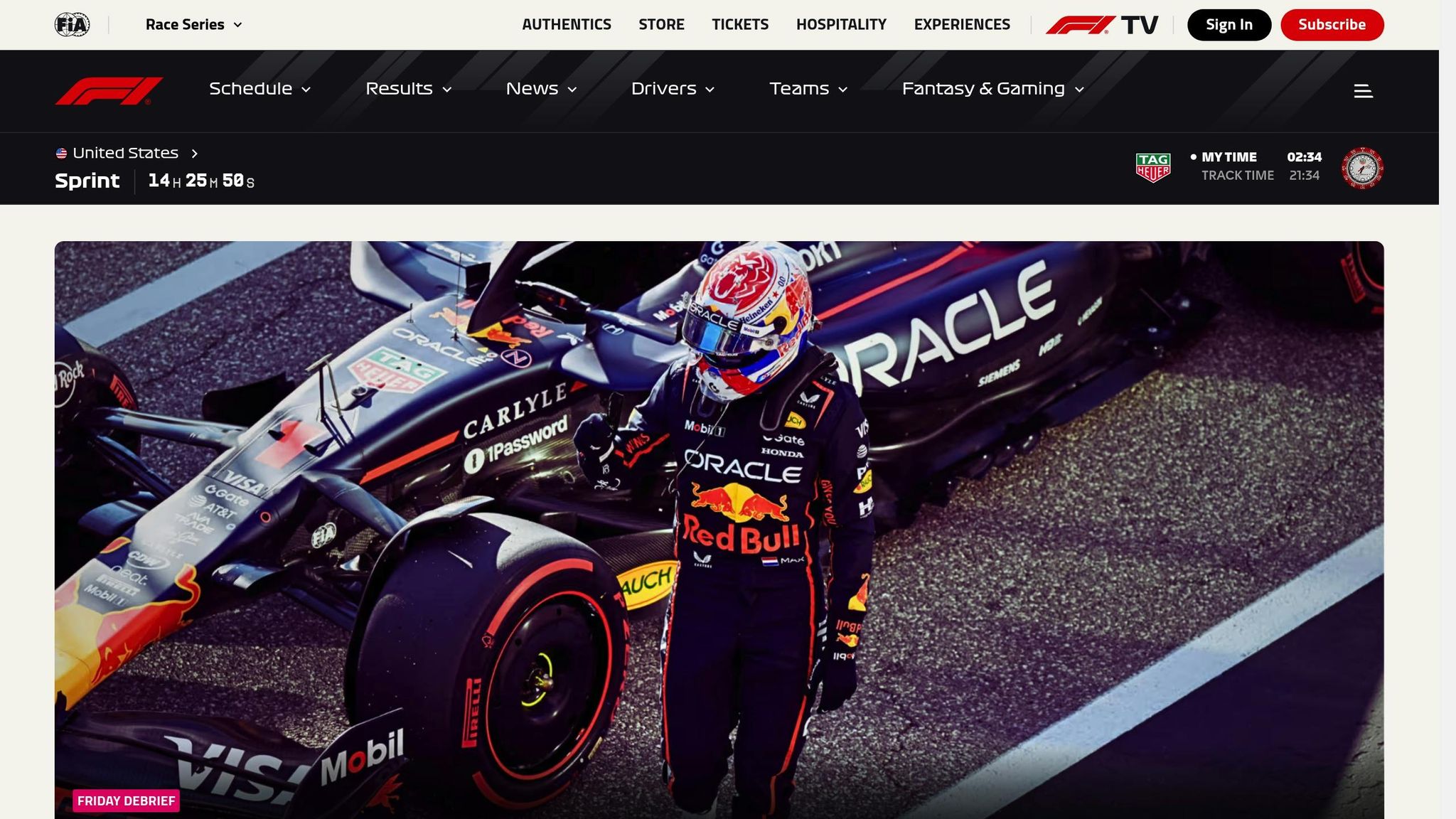
Defending in Formula One is all about taking control of the racing line with a single, decisive move before an opponent commits to their path. On the other hand, blocking is a reactive response that often crosses the line into unsafe territory and can lead to penalties.
Beyond just following the rules, skillful defending highlights a driver's ability to anticipate and strategize, while blocking disrupts the natural flow of the race and goes against the spirit of fair competition. Striking the right balance between competitiveness and sportsmanship is what separates the best from the rest.
Success in wheel-to-wheel racing hinges on making deliberate, calculated moves under pressure. Drivers who can execute a single defensive move while staying predictable showcase true mastery, unlike those who rely on risky blocking tactics. Over time, these rules have been refined to encourage both safety and intense competition on the track.
As FIA regulations continue to adapt to advancements like DRS, these guidelines remain the cornerstone of fair racing. They ensure that victories are achieved through skill, strategy, and precision, rather than last-minute gambles that jeopardize safety. Drivers who master this balance are the ones who consistently find themselves at the front of the grid.
FAQs
What penalties can F1 drivers receive for blocking during a race, and how do these affect race strategy?
In Formula 1, blocking refers to deliberately impeding or dangerously obstructing another driver. This behavior can result in penalties, which might include time penalties, grid position drops for future races, or even disqualification in extreme cases. Race stewards assess the situation and determine the appropriate penalty based on how severe the infraction is.
These penalties can throw a wrench into a team’s race strategy. Take a time penalty, for instance - it could force a driver to push harder to make up for lost seconds, which might lead to increased tire wear or higher fuel consumption. A grid drop for the next race presents its own challenges, potentially affecting a team's long-term championship plans. This would require adjustments in qualifying and race-day strategies to minimize the disadvantage. For teams and drivers aiming to stay competitive, understanding the rules around blocking and steering clear of violations is key to reducing risks and staying in the fight.
How does the Drag Reduction System (DRS) affect defending and blocking strategies in Formula 1?
The Drag Reduction System (DRS) has reshaped the way Formula 1 drivers tackle defending their position on the track. By cutting down aerodynamic drag and boosting straight-line speed, DRS gives the pursuing driver a clear edge when attempting an overtake. This means defending drivers must rely more on sharp strategy and perfect timing to stay ahead.
Blocking - where a driver makes sudden or erratic moves to prevent being overtaken - is tightly controlled in Formula 1 for safety reasons. With the added challenge of DRS, defending drivers are required to focus on precise, deliberate maneuvers to avoid penalties. This often involves positioning their car strategically before entering DRS zones, aiming to reduce the attacker's advantage. In essence, DRS has shifted the focus from aggressive blocking to a more calculated and strategic approach to defending.
How can a driver's reputation be impacted by relying on blocking tactics instead of strategic defending in Formula 1?
A driver's reputation in Formula 1 can suffer if they become known for relying too much on blocking tactics. Blocking is often criticized as overly aggressive and unsportsmanlike because it focuses more on hindering an opponent’s progress than on demonstrating skillful racecraft. This kind of approach can result in penalties, strained relationships with fellow drivers, and backlash from fans and commentators.
In contrast, strategic defending is widely regarded as a legitimate and respected skill. It’s about anticipating an opponent’s moves and using smart positioning to hold onto track position without resorting to dangerous or unfair tactics. Drivers who excel at defending are admired for their ability to race cleanly and maintain composure under pressure. Over time, excessive blocking can overshadow a driver’s talent and hurt their reputation within the sport.

